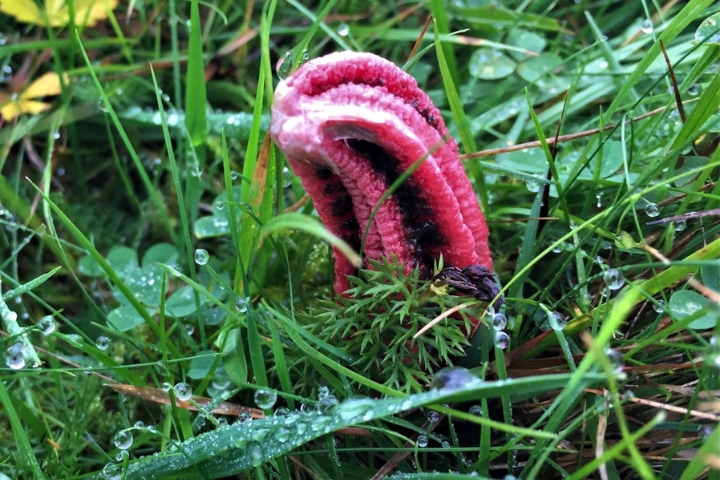The UK’s New Forest is currently experiencing an uncommon and unpleasant natural phenomenon: the ‘Devil’s Fingers’ fungus (Clathrus archeri) has emerged. The mycelium that resembles an extraterrestrial and has a strong smell similar to rotting flesh have drawn interest from both mycologists and amateur photographers. Although it usually appears in late October, this year’s early sightings due to odd weather have piqued curiosity in this unique species once again.
Unique Characteristics of Devil’s Fingers
The ‘Devil’s Fingers’ fungus can be easily identified by its peculiar shape. It starts off as a gelatinous egg-shaped object that is partially buried in dirt or leaf litter. It is about the size of a golf ball. This ‘egg’ can stay dormant for weeks until the right conditions are met for growth, and it is linked to an underground network of mycelium. When the egg is ready to fruit, it bursts out to reveal four to eight thin, tentacle-like fingers that can reach a maximum length of seven centimeters. When completely developed, these tentacles, which are initially connected at the tip, arch backward to form a star-like configuration that can reach heights of up to 15 cm.
Spore-containing gleba is a slimy, black material that covers the tentacles. This slime is meant to draw in insects like beetles and flies with its potent smell of rotting flesh. Spores adhere to these insects’ bodies and distribute throughout the surroundings when they come into contact with the slime, aiding in the fungus’s growth and reproduction.
Origins and Ecological Impact
‘Devil’s Fingers,’ a native of Australia and New Zealand, most likely traveled to Europe in WWI via imported lumber or military supplies. The initial sighting in the United Kingdom was reported in 1946 in Cornwall, and most of the following sightings were in southern England. This species now has a sizable habitat in the New Forest, where it can be seen thriving in both open grasslands and woodland places.
‘Devil’s Fingers’ is not harmful, but because of its disagreeable texture and smell, wildlife tends to stay away from it. Its distinct strategy of spore dissemination via insect attraction has worked well; twenty years after it was first introduced to the New Forest, it has spread rapidly over the area. It is speculated that this uncommon fungus may adapt and even spread farther within the UK as climate change continues to impact ecosystems worldwide.
In addition to its remarkable look, “Devil’s Fingers” are fascinating because of their function in the environment as spore dispersers and biodiversity contributors. This alien-looking fungus serves as a reminder of the intricacy and adaptability of nature as sightings increase in frequency owing to changing environmental circumstances.




GIPHY App Key not set. Please check settings